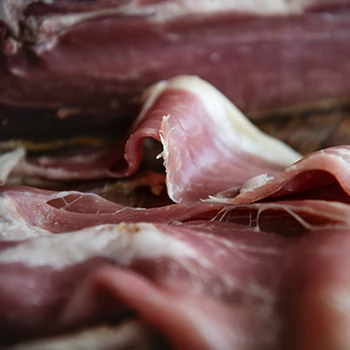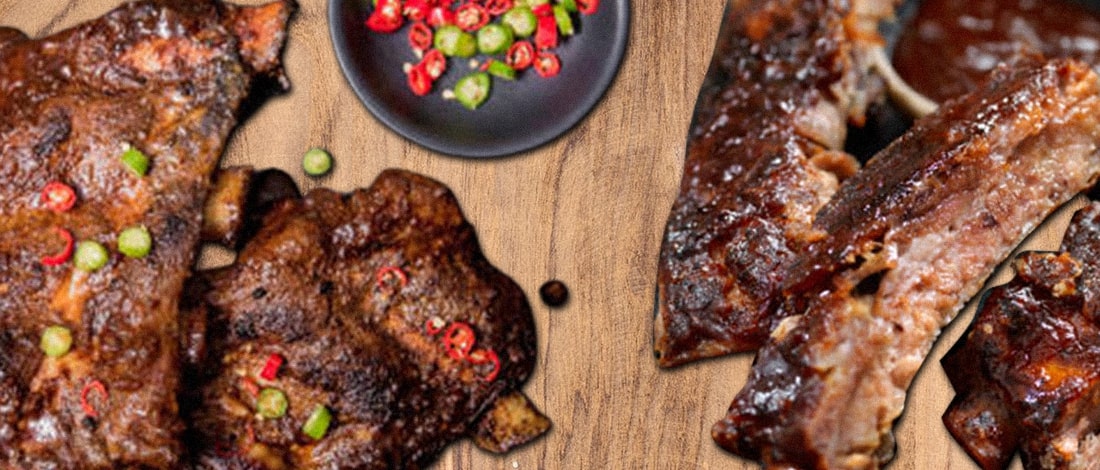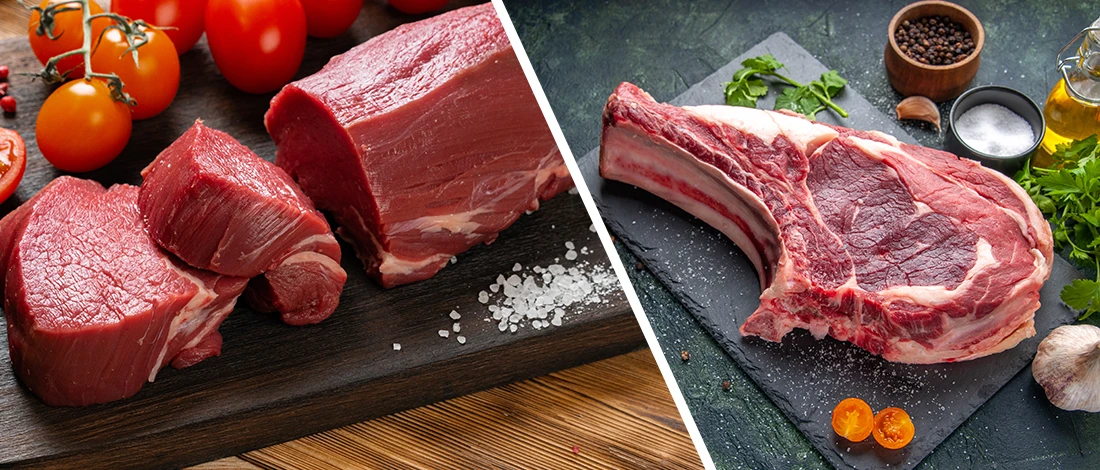I’ve been on a carnivore diet for more than a decade so it goes without saying that I’m a huge meat lover.
I’ve tried different kinds of meat over the years, but ham and salami are among my favorite meats. Many people use these two terms interchangeably, but these are two different cuts.
At Carnivore Style, we love diving into the details of every meat cut to help enthusiasts make informed choices. As such, I’ve spent hours learning about all things salami and ham, and I’ve talked with a butcher.
Here’s everything you should know about these two kinds of meat.
Quick Summary
- Both ham and salami are processed meats, with ham made specifically from pork's rear leg and salami made from various meats, primarily pork.
- Salami undergoes fermentation and dry curing, resulting in a bright red color and a sweet, savory, and spicy taste, while ham is often dry-cured or wet-cured, resulting in a pale pink color and a slightly sweet, smoky flavor.
- While both are rich in proteins, ham is generally healthier due to its higher vitamin content and lower fat content compared to salami.
- If you’re looking for high-quality ham and salami supplier, check out our selection of the 11 best places to order meat online.
What is Salami?

Salami is a ground meat sausage that comes from Italian cuisine. The meat is dried to produce a rich flavor and preserve it for longer shelf life.
It can also be cooked, or hot smoked to reach a cooked internal temperature.
Here are the main traits of salamis:
- Meat - Salami is made with pork, but there are also venison, veal, beef, and even poultry versions. It can also be a mix of different meats.
- Fermentation - Salami is first fermented, and this stage lasts for up to three days. This is often done with vinegar for the salami to reach a high pH level. Once the meat is blended, it goes through a fermentation phase. Finally, it’s air-dried, so the final product is a cured sausage.
- Spices - Different herbs and spices are added to salami during the dry curing process to enhance the salami taste, such as salt, pepper, garlic, minced fat, and others.
- Meat-to-fat ratio - Salami usually has a ratio of 80% meat to 20% fat [1]. However, some cheaper versions usually found in budget supermarkets can have as little as 30% to 40% meat, and the rest is water, fat, and binders.
- Color - Salami has a bright red color that’s even throughout. In case you notice a change in color or mold, it’s a sign the salami has gone bad.
Dry-aged salamis don’t have to be kept in the fridge. There’s a minimal chance of bacterial growth because they’ve been dry-cured.
pH and Salami
Only meat with a low pH value can be used to make salami. The pH should be less than 5.3. This is considered safe because a low pH prevents the growth of microorganisms.
Salami goes through a drying process which removes up to 50% of its moisture.
This also results in a low chance of bacteria, and it gives good microorganisms a chance to thrive and preserve the flavor and salami qualities.
What is Ham?

Ham is preserved leg of a pig. This is a whole muscle, and it can be dried or wet cured and then cooked or smoked.
Ham has a smokey flavor and can be made using whole cuts or mechanically formed cuts (cuts made via meat slicers).
Ham is made from pork. Some versions of ham are made from birds and other kinds of meat, but these are rare.
Ham is often dry-cured because the curing process keeps the ham preserved even at room temperature. This means there’s no need to keep dry-cured ham in the fridge.
Ham is made from the rear leg of the pig. Ham variants can be made from different cuts, such as the front leg of the pic, but traditional ham comes from the pig's rear leg.
“A ham is the rear leg of pork, all the way from the shank to the rump. It is usually cured, which means it is preserved with sugar, salt, sodium nitrate, and/or smoke.”
- Meredith Lawrence, Chef
Unlike salami, ham doesn’t have a specific meat-to-fat ratio, amount of bone, or binders.
Pretty much anything goes for ham as long as it comes from the pig's rear legs.
Ham can be a whole salted and dried or smoked pig’s leg. It can also be chopped spiced leg that’s cured with salt and smoke.
Raw ham has a similar appearance to fresh pork toast. Its color is pale pink.
Ham is processed meat and has a somewhat sweet and smoky flavor, but its taste can change depending on the curing process.
Also Read: What Is Black Forest Ham?
Dry-Cured Ham

Most hams you see at grocery stores are cured hams. The curing process can be wet or dry curing. This determines how you should store, serve, and preserve the ham.
Dry-cured ham is first washed, then placed in salt, and pressed to drain liquid. Then spices and herbs are added. Ham is kept in the dark, temperature-controlled room.
Depending on the type of ham being cured, it can be hung for months, or even years, to form the taste.
Once the drying process is done, the ham can be eaten. Dry-cured ham can last for a long time because there’s no moisture, which means less chance of germs.
Wet-Cured Ham
Wet-cured ham goes through a different process than dry-cured. Wet-cured ham is brined before being cooked in an oven or a smoker.
Brining means the ham is soaked for a few days. This allows the ham to absorb the salt, sugar, and spices from the brine.
Wet-cured ham can be cooked or smoked. It’s often smoked because it protects the ham against bacteria and gives it a better taste.
Differences Between Salami and Ham

Both ham and salami are processed meats, but there are significant differences between them.
Here are all the differences between salami and ham:
- Appearance — The biggest salami and ham difference is in their appearance. Salami has a bright red color with white dots in the middle, while ham is pale pink.
- Main ingredient — Salami is made of pork, while ham is made specifically from pork’s rear leg. However, there are variations, such as chicken ham and venison salami.
- Origin — Salami comes from Italy, while ham comes from China.
- Flavor — Salami taste is sweet, savory, and spicy. Ham is slightly sweet and has a smoky flavor.
- Nutrients — Salami has more fat (up to five times more saturated fat). Ham has more vitamins (B1 and B12), copper, and selenium [2]. Both are rich in proteins, but ham is healthier than salami.
Related Article: Beef vs Pork Sausage
FAQs
What’s Healthier: Salami or Ham?
Ham is healthier than salami. Ham has more vitamins and less fat.
What is the Difference Between Chicken Salami and Ham?
The difference between chicken salami and ham is that chicken salami has unprocessed meats, while ham has processed meat. Also, chicken salami has more fat than ham.
Is Pepperoni a Salami or Ham?
Pepperoni is salami. This is an American version of salami. It’s spicier than regular salami and has a smoky, peppery flavor.
Is Salami Good for Health?
Salami is not very good for health. It’s low in carbs and calories but high in fat and sodium.
Can You Eat Salami Raw?
Yes, you can eat salami raw because of the fermentation and the drying process. These make sure there are no bacteria in salami.
Understanding the differences between ham and salami can elevate your carnivore diet experience. At Carnivore Style, we’re dedicated to helping you explore and enjoy the finest cuts of meat, so you can make the most of your carnivore lifestyle.
References:
- http://gastrochemist.com/salami-basics/#:~:text=Meat%20and%20Fat%3A
- https://www.recipetips.com/kitchen-tips/t--746/ham-nutritional-facts.asp#:








